Citrus fruits are among the most popular and nutritious fruits in the world. They have a sweet and tangy taste that can refresh and energize anyone who consumes them. The Philippines is one of the countries that produce and export citrus fruits, especially mandarin oranges or sinturis. Citrus farming is a profitable and rewarding venture for many Filipino farmers who have access to suitable land, climate, and soil conditions.
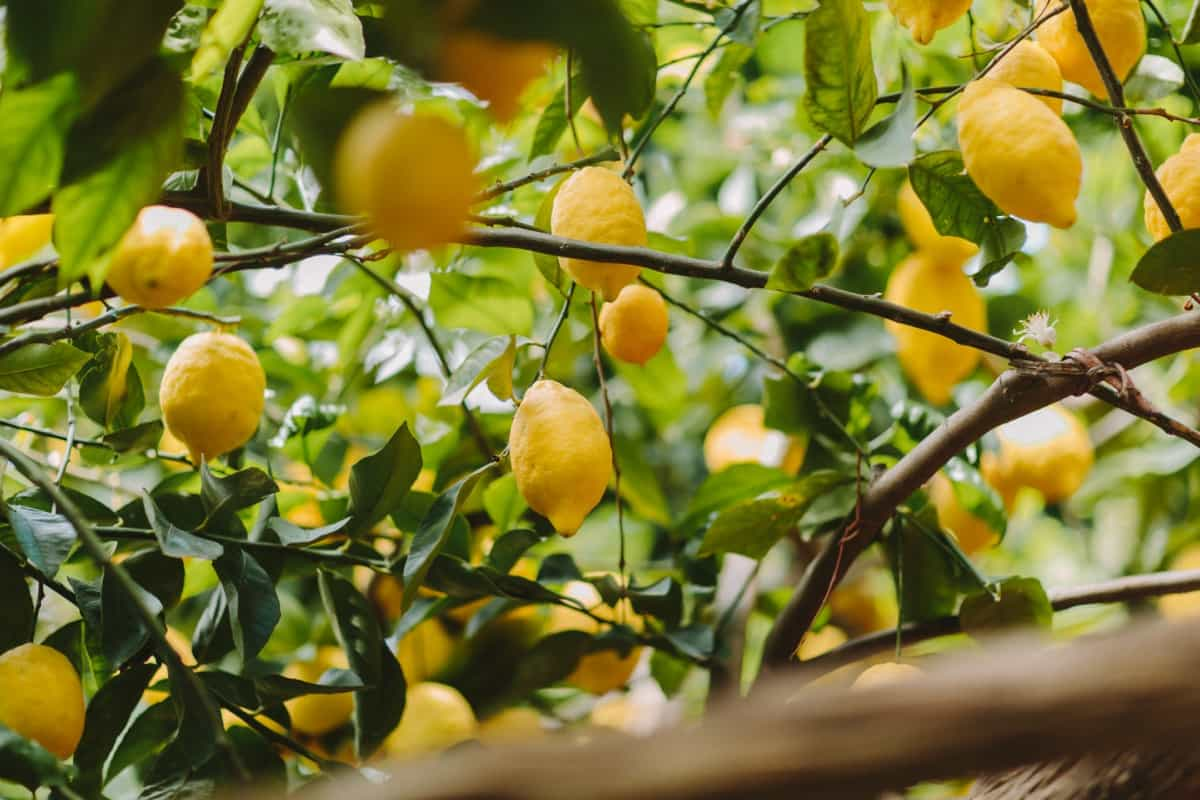
However, citrus farming also faces some challenges, such as pests, diseases, and market competition. This article will explore the history, production, processing, marketing, and economic significance of citrus farming in the Philippines.
History and Origins of Citrus Farming in the Philippines
Citrus fruits originated in Southeast Asia and have been cultivated for thousands of years. The earliest records date back to 2200 BC in China. Chinese traders introduced citrus fruits to the Philippines, along with silk, porcelain, and spices. Spanish colonizers introduced new citrus varieties from Mexico and America and established orchards and nurseries for propagation and distribution.
The American occupation also influenced citrus farming in the Philippines, introducing improved varieties like Washington navel, Valencia, Hamlin, Satsuma, Ponkan, and Clementine and providing technical assistance and research support for citrus improvement and pest management.
Climate and Type of Soil Available to Grow Citrus in the Philippines
The Philippines has a tropical climate that is favorable for growing citrus fruits. The country has two seasons: wet and dry. Between December and May, it doesn’t rain. From June to November, it rains. In general, the temperature is between 23°C and 32°C, and it rains between 1000 mm and 3000 mm a year. Citrus plants do well in places that get enough sunshine, rain, drainage, and airflow. They like soils that are slightly acidic, between 5.5 and 6.5 on the pH scale.
In case you missed it: Pineapple Farming in the Philippines: Exploring Varieties to Cultivation Economics
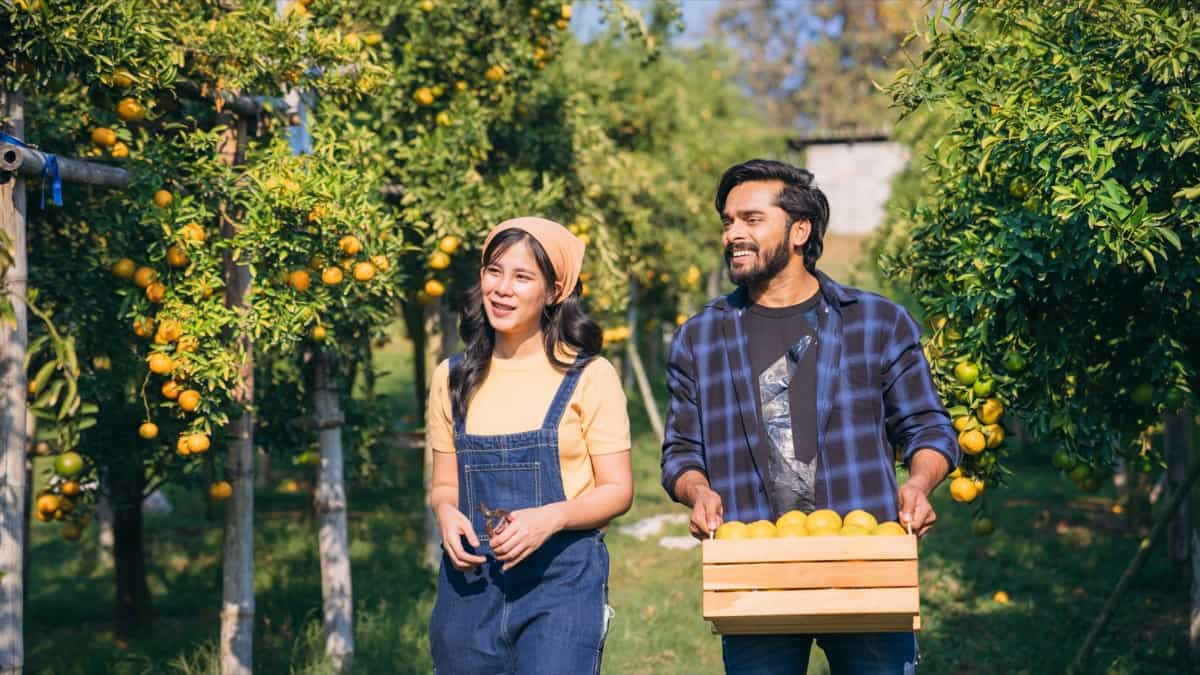
Besides that, they need grounds that drain well and are full of minerals like iron, zinc, copper, manganese, boron, nitrogen, phosphorus, potassium, calcium, magnesium, and a lot of organic matter. Major citrus-producing regions and provinces in the Philippines Central Luzon, Southern Tagalog, and Northern Mindanao house most citrus farms. Batangas leads, dedicating over 1,000 hectares to Sinturis. Nueva Vizcaya hailed as the Citrus Capital, contributes a diverse selection of fresh citrus fruits.
Citrus farming is a highly profitable industry in the Philippines because of its expanding export market. The country has a perfect climate for growing citrus crops throughout the year, making it convenient for farmers to consistently produce high-quality yields.
Citrus Boom in the Philippines: Regional Perspective
The Philippine citrus industry is experiencing significant growth, with a 9% surge in production in 2020, driven by escalating demand both locally and internationally. The industry is primarily concentrated in Central Luzon, Southern Tagalog, and Northern Mindanao, with Batangas leading the charge. However, challenges such as pest infestations and soaring production costs persist, necessitating financial aid programs for sustainability.
The industry holds immense potential for expansion, but strengthening production volume and maintaining quality standards are crucial for future success. Regions like Calabarzon, Central Luzon, and Northern Mindanao are leading citrus farming, while provinces like Batangas, Nueva Ecija, and Misamis Oriental play pivotal roles in local and global citrus trade. Beyond domestic borders, regions like Davao, Western Visayas, Pangasinan, and Bukidnon contribute significantly to the global citrus market, highlighting the Philippines’ role in shaping international trade dynamics.
Popular Citrus Varieties Grown in the Philippines
The Philippines produces various types of citrus fruits that belong to different groups, such as oranges (sweet or sour), mandarins (tangerines or clementines), lemons (acid or sweet), limes (key or Persian), grapefruits (white or pink), pomelos (white or pink), calamansi (native lime), kalamansi (hybrid lime), dalandan (native orange), dalanghita (native mandarin), suha (native pomelo), among others.
Sinturis or Mandarin Oranges: These are small to medium-sized fruits with a bright orange color and easy-to-peel skin. They have a sweet and juicy pulp, eaten fresh or processed into juice or jam. Some of the common varieties are Satsuma, Ponkan, Clementine, Kinnow, Murcott, Nova, and Kara-Kara.
Dalandan or Native Oranges: These are medium-sized fruits with a greenish-yellow color and thick skin. They have a sour and bitter pulp that can be used for making juice or vinegar. Some of the common varieties are Hamlin and Valencia.
Calamansi or Native Lime: These are small fruits with a green to yellow color and thin skin. They have a sour and acidic pulp that can be used for flavoring dishes or drinks. Some of the common varieties are Philippine lime, Kaffir lime.
In case you missed it: Beekeeping in the Philippines: Exploring Apiculture Industry in the Philippines
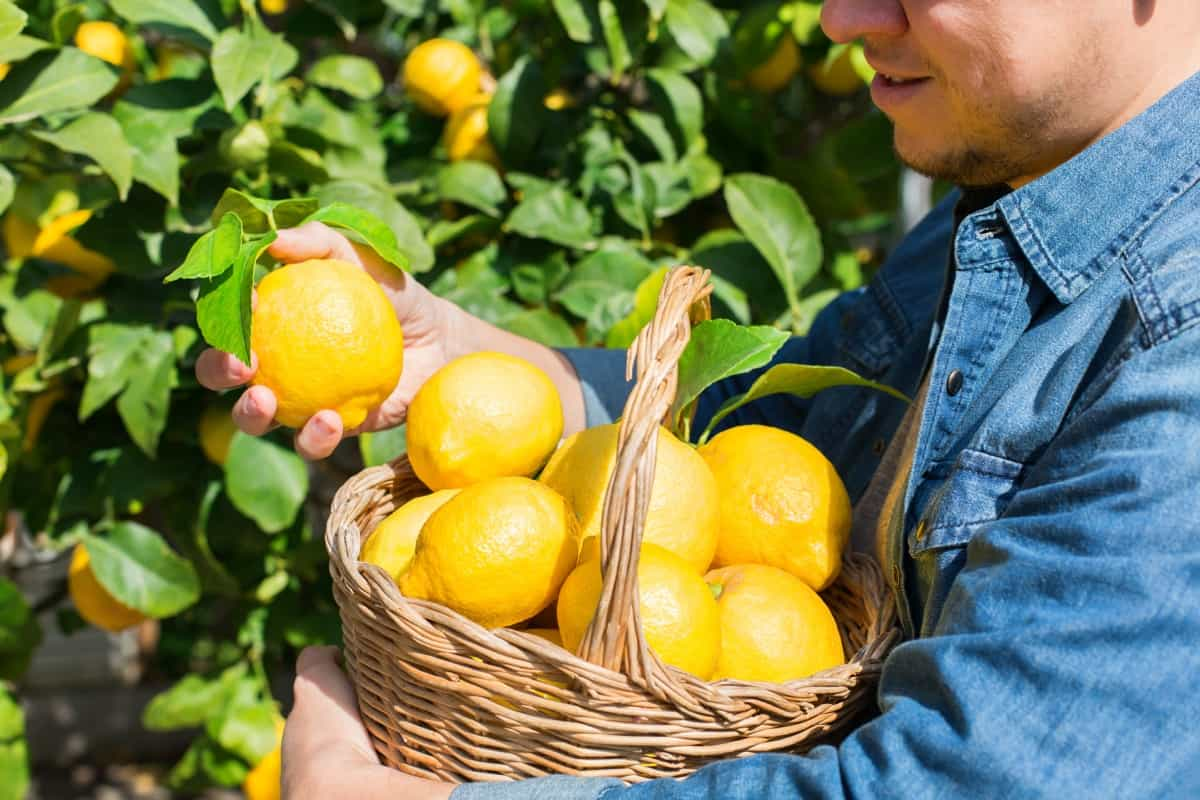
Suha or Native Pomelo: These are large fruits with a green to yellow color and thick skin. They have a sweet and fragrant pulp, eaten fresh or processed into juice or candy. Some of the common varieties are Chandler, Amoy, Magallanes, and Davao.
Citrus Production and Harvesting Practices
- Choosing the Right Soil: For optimal growth, opt for well-drained soil with a pH level between 5.5 and 7.0. Citrus trees thrive in this balanced environment.
- Selecting an Ideal Location: Ensure your tree basks in full sunlight. Spring or summer, free from frost and extreme heat, is the perfect planting window.
- Digging and Planting: Dig a hole twice as wide and deep as the root ball. Mix in organic compost, position the root ball upright at ground level, and gently tamp down the soil.
- Backfilling and Watering: Fill the hole around the roots, ensuring every gap is filled. Water thoroughly after planting to foster a healthy start.
- Nurturing Growth: Successful Citrus mandarin orange growth demands proper watering, regular fertilization, timely pruning, and vigilance against pests like aphids.
- Harvesting and Marketing: Handpick mature fruits with care to prevent bruising. Sort and grade them before packaging for sale through various channels.
- Sinturis Commercial Demand: Renowned for its sweet taste and easy-to-peel rind, Sinturis enjoys high demand locally and internationally. Many Filipino farmers export Sinturis for enhanced profits.
- Productivity and Yield: Factors like soil type, climate, irrigation, and disease control influence Sinturis productivity. With proper care, farmers can expect 10-15 tons per hectare. Quality seeds, fertilization, and water conservation contribute to increased yields and profitability.
- Citrus Farming Practices: In the Philippines, small-scale farmers dominate citrus production. They utilize traditional cultivation methods like seed propagation, grafting, pruning, and organic inputs such as compost and biopesticides.
- Harvesting Techniques: Harvesting is mainly manual, involving handpicking or using poles and ladders. Sorting, grading, and careful transportation follow, with the harvesting season spanning from August to November.
Citrus Processing and Marketing in the Philippines
Citrus farming involves not only growing fruits but also processing and marketing them to meet consumer and buyer standards. The process includes harvesting, packing, grading, labeling, storing, and transporting. Harvest fruits at the right time and ensure they are ripe, sorted, and packed in clean, sturdy containers. Grading helps determine the price and marketability of the fruits, while labeling helps identify the source and quality.
Storing fruits in cool, dry places, such as refrigerated rooms or warehouses, helps prevent spoilage and deterioration. Transporting fruits in vehicles with adequate ventilation and insulation is crucial to avoid heat, sunlight, or rain. Citrus farmers can market their products through various channels, such as cooperatives, traders, wholesalers, retailers, processors, exporters, or direct consumers. They must establish good relationships with buyers, negotiate fair prices, and comply with the requirements and standards of their target markets.
Economic Significance of Citrus Farming in the Philippines
Citrus farming is a crucial agricultural sector in the Philippines, contributing to economic development and social welfare. It generates income and employment for thousands of farmers, workers, and entrepreneurs, with production reaching 1.03 million metric tons in 2020, valued at 15.8 billion pesos. Citrus farming also supports other industries like processing, packaging, transportation, and marketing.
In case you missed it: Sorghum Farming in the Philippines: A Step-by-Step Production Guide
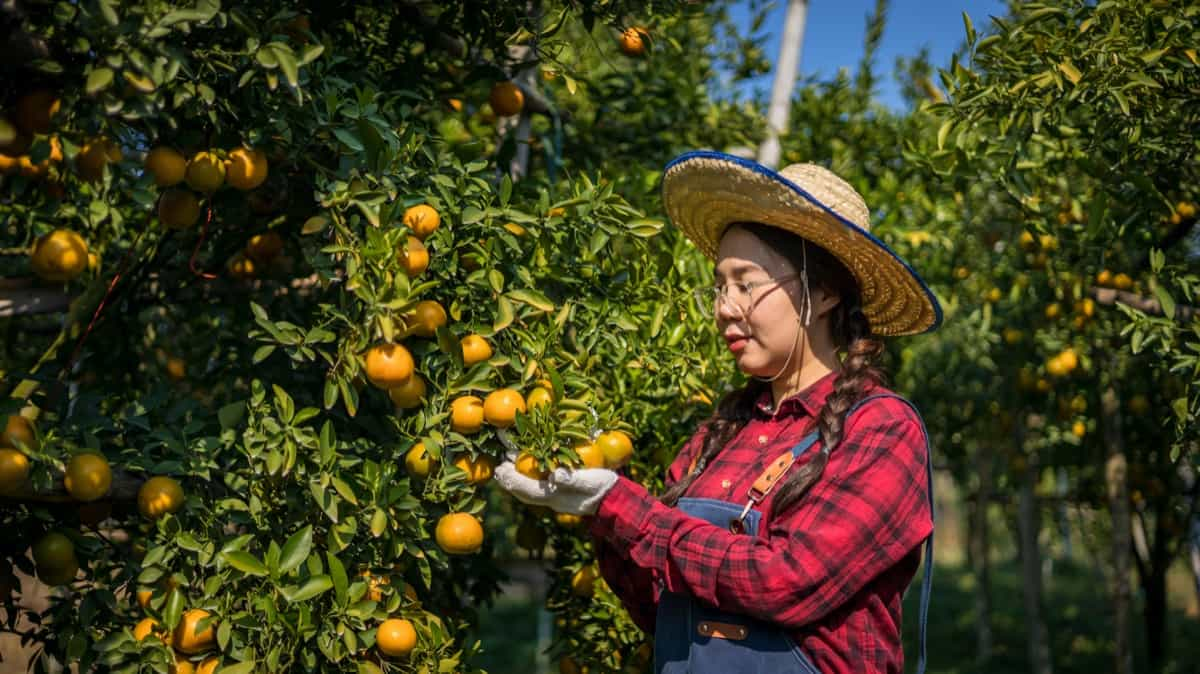
It enhances food security and nutrition by providing nutritious fruits for the Filipino population and improving dietary diversity and quality, especially for children, pregnant women, and the elderly. Citrus fruits can also prevent micronutrient deficiencies like anemia and vitamin C deficiency. Additionally, citrus farming promotes environmental sustainability by conserving natural resources and biodiversity, preventing soil erosion, improving soil fertility, sequestering carbon dioxide, and reducing food waste and greenhouse gas emissions.
Common Pests and Diseases of Citrus in the Philippines Environment
Citrus farming in the Philippines faces numerous challenges and risks, including the presence of common pests and diseases. These include citrus greening, a bacterial disease transmitted by the Asian citrus psyllid (ACP), which causes yellowing, mottling, and curling of leaves, stunting of shoots, and fruit drop. HLB is uncurable but can be prevented by controlling the ACP population, removing infected trees, and using resistant varieties.
Citrus canker causes lesions on leaves, stems, and fruits, premature leaf fall, fruit drop, and reduced yield. Citrus scab causes raised lesions and deformation of fruits. Citrus blackfly sucks sap from leaves and stems, causing yellowing, wilting, and curling. Citrus leafminer feeds on leaf tissues and create tunnels, causing distortion, curling, browning, reduced photosynthesis, and growth. Control methods include spraying insecticides, pruning infested leaves, and using pheromone traps.
Citrus Research and Development in the Philippines
Citrus farming in the Philippines is constantly evolving and improving through research and development (R&D). R&D activities include breeding, propagation, cultivation, pest management, disease management, and post-harvest handling. Breeding involves developing high-yielding, disease-resistant, pest-resistant, drought-tolerant, climate-adapted, or quality-enhanced citrus varieties through genetic modification or cross-pollination.
Propagation involves multiplying citrus plants through seeds or cuttings, aiming to produce healthy seedlings ready for transplanting or grafting. Cultivation involves applying best practices for growing citrus crops, such as irrigation, fertilization, pruning, mulching, intercropping, or organic farming. Pest management aims to reduce pest damage and environmental impacts. Disease management aims to reduce disease incidence and severity while minimizing chemical use.
Government Support and Policies for Citrus Farming in the Philippines
The Philippine government acknowledges the citrus industry’s significance and potential, with citrus production increasing by 9% in 2020 and increased demand from local and international markets. The government offers support to citrus farmers through programs like the Philippine Citrus Industry Development Program (PCIDP), which enhances productivity, quality, and competitiveness through research and development, extension services, market development, and policy advocacy.
The High-Value Crops Development Program (HVCDP) provides financial assistance, technical support, and market linkages for farmers growing high-value crops like citrus. The Agricultural Competitiveness Enhancement Fund (ACEF) offers loans, grants, and scholarships to farmers, cooperatives, and agribusinesses involved in citrus production, processing, and marketing.
Citrus Farming and Sustainability
Citrus, also known as Sinturis in the Philippines, belongs to the Rutaceae family and includes oranges, lemons, limes, and mandarin oranges, with mandarin oranges being popularly referred to as “dalandan.” Citrus farming is a thriving industry in the Philippines, especially in regions like Calabarzon, Central Luzon, and Northern Mindanao. Batangas province leads in citrus cultivation, particularly Sinturis.
In case you missed it: How to Start Organic Farming in the Philippines: Schemes, Certification, Profits, Cost, and Challenges
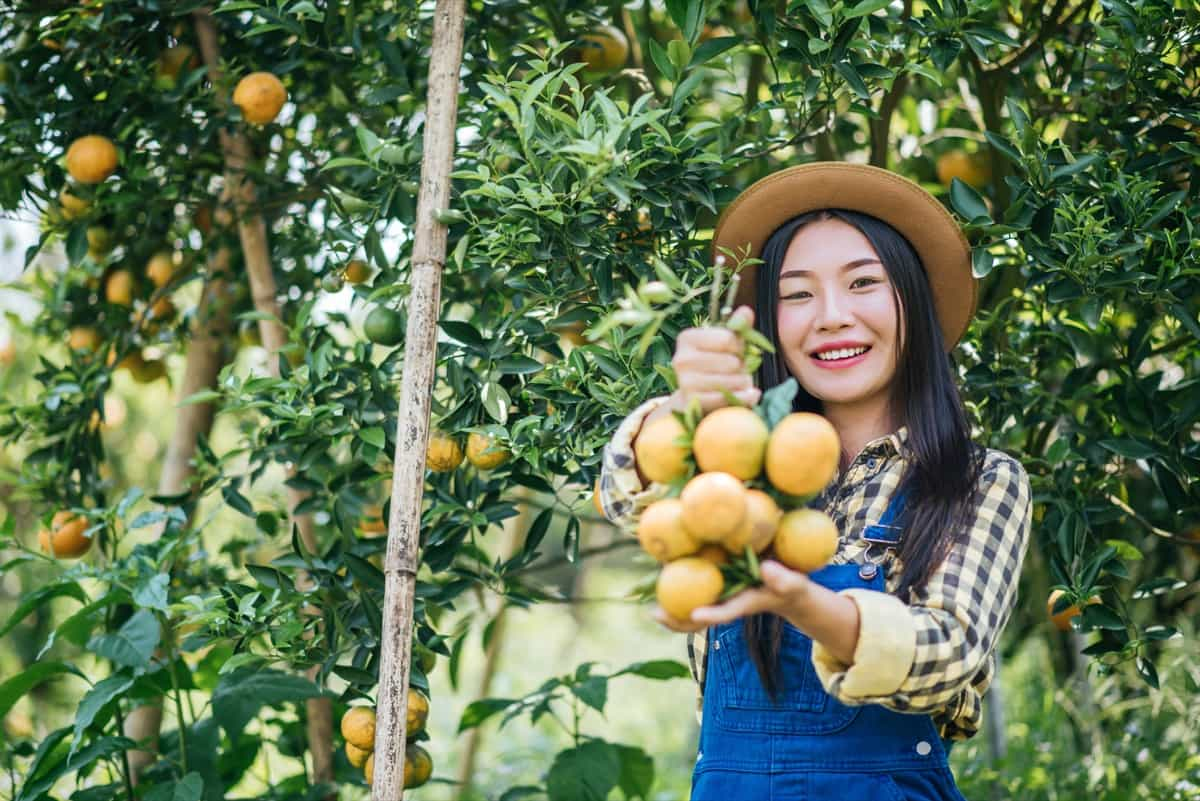
The citrus industry in the Philippines experienced a 9% increase in production in 2020, according to the Philippine Statistics Authority, driven by both local and international demand. Despite its profitability, citrus farming faces challenges like pest infestations, high production costs, and logistical issues in transportation.
Harvesting should be done carefully by hand to prevent damage, and proper handling is crucial for transportation. Farmers can sell through various channels, including local markets and exports. The productivity of Sinturis depends on factors like soil type and climate. On average, a well-managed farm can yield 10-15 tons per hectare.
Challenges and Future Prospects for Citrus Cultivation in the Philippines
Pest management is a critical challenge, with mites, aphids, and fruit flies posing constant threats. Effective control measures are imperative to safeguard citrus crops from significant yield reduction. Logistics compound the situation, as road infrastructure and limited transportation options hinder timely market access, leading to spoilage and financial losses for farmers. Additionally, more skilled labor is needed, requiring experienced workers versed in planting techniques, pruning methods, irrigation practices, and harvesting processes.
While citrus farming holds great potential, farmers grapple with these challenges, necessitating resilience and adaptability. However, viable alternatives offer diversification avenues. Organic vegetable gardening is gaining traction among health-conscious consumers, providing a pesticide-free option. Livestock production, agroforestry, and aquaculture present additional paths, offering sustainable models with environmental benefits.
In case you missed it: How to Start Rabbit Farming in the Philippines: Business Plan, Profit, Subsidy, Loans, and Requirements

Conclusion
Citrus farming is a promising and lucrative industry in the Philippines. With proper knowledge, skills, and support from the government and other stakeholders, citrus farmers can produce quality yields that can meet the demands of both local and international markets. Citrus farming can also contribute to food security, income generation, and rural development in the country.
- Types of Pesticides Used in Agriculture: A Beginner’s Guide
- Economical Aquaculture: A Guide to Low-Budget Fish Farming
- 15 Common Planting Errors That Can Doom Your Fruit Trees
- How to Make Houseplants Bushy: Effective Tips and Ideas
- Innovative Strategies for Boosting Coconut Pollination and Yield
- Pollination Strategies for Maximum Pumpkin Yield
- The Complete Guide to Chicken Fattening: Strategies for Maximum Growth
- Natural Solutions for Tulip Problems: 100% Effective Remedies for Leaf and Bulb-Related Issues
- Revolutionizing Citrus Preservation: Towards a Healthier, Greener Future
- Natural Solutions for Peony Leaf and Flower Problems: 100% Effective Remedies
- Maximizing Profits with Avocado Contract Farming in India: A Comprehensive Guide
- Natural Solutions for Hydrangea Problems: 100% Effective Remedies for Leaf and Flowers
- The Ultimate Guide to Choosing the Perfect Foliage Friend: Bringing Life Indoors
- From Sunlight to Sustainability: 15 Ways to Use Solar Technology in Agriculture
- The Ultimate Guide to Dong Tao Chicken: Exploring from History to Raising
- The Eco-Friendly Makeover: How to Convert Your Unused Swimming Pool into a Fish Pond
- Mastering the Art of Delaware Chicken Farming: Essentials for Healthy Backyard Flocks
- 20 Best Homemade Fertilizers for Money Plant: DIY Recipes and Application Methods
- How to Craft a Comprehensive Free-Range Chicken Farming Business Plan
- Brighten Your Flock: Raising Easter Egger Chickens for Beauty and Bounty
- How to Optimize Your Poultry Egg Farm Business Plan with These Strategies
- Subsidy for Spirulina Cultivation: How Indian Government Schemes Encouraging Spirulina Farmers
- Ultimate Guide to Raising Dominique Chickens: Breeding, Feeding, Egg-Production, and Care
- Mastering the Art of Raising Jersey Giant Chickens: Care, Feeding, and More
- Ultimate Guide to Raising Legbar Chickens: Breeding, Farming Practices, Diet, Egg-Production
- How to Raise Welsummer Chickens: A Comprehensive Guide for Beginners
- How to Protect Indoor Plants in Winter: A Comprehensive Guide
- Ultimate Guide to Grow Bag Gardening: Tips, Tricks, and Planting Ideas for Urban Gardeners
- Guide to Lotus Cultivation: How to Propagate, Plant, Grow, Care, Cost, and Profit
- Agriculture Drone Subsidy Scheme: Government Kisan Subsidy, License, and How to Apply Online
- Ultimate Guide to Raising Araucana Chickens: Breed Profile, Farming Economics, Diet, and Care
- Bringing Hydroponics to Classroom: Importance, Benefits of Learning for School Students
- Ultimate Guide to Raising Polish Chickens: Breed Profile, Farming Economics, Diet, and Care
- Ultimate Guide to Raising Australorp Chickens: Profile, Farming Economics, Egg Production, Diet, and Care
- Silkie Chicken Farming: Raising Practices, Varieties, Egg Production, Diet, and Care
- Sussex Chicken Farming: Raising Practices, Varieties, Egg Production, Diet and Care